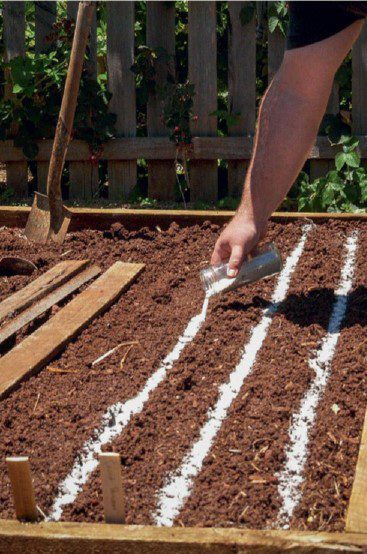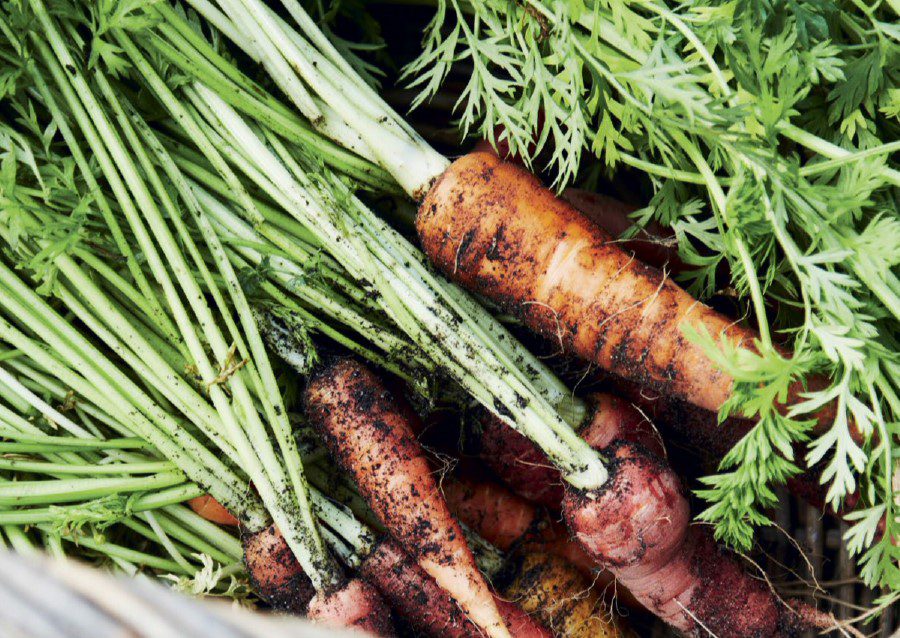Are Carrots Good For Your Eyes
Carrots are a rich source of beta carotene and lutein, which are antioxidants that can help prevent eye damage caused by free radicals.
Carrots are solid sources of lutein and beta carotene, antioxidants benefiting eye health and ward against age-related degenerative eye diseases.
Your body transforms beta carotene into vitamin A, a nutrient responsible for your sight in the dark.
Carrots To Grow
If you ask any kid what color a carrot is, you could bet the house on what their answer will be.
The classic orange carrot is as instantly recognizable as a vegetable can get. No wonder researchers believe that carrots have been cultivated since 1000 CE, and wild carrots have been a part of the human diet for some 5000 years.
They come in all kinds of different shapes and sizes and an array of colors, such
as purple, black, white, yellow, and red, as well trusty ol’ orange.
The rainbow of variety alone is a good reason to crack at growing your own carrots, but the main reason I like to grow my own carrots is the flavor.
The shop-bought carrots we eat maybe chock-full of sugars when harvested, but as
soon they are out of the ground, the sugars start converting to tasteless starches – by the
time they reach our table, they’ve lost a fair bit of goodness and lots of flavors.
In contrast, a well-grown organic carrot pulled from the earth and eaten straight away is a crunchy explosion of earthy sweetness.
Try one, and it’s all the motivation you’ll need to reserve some garden beds for these terrific root veggies.
Get Cracking
If you live in a temperate zone, the window for planting them is closing, so get your seeds in before the end of April.
If you’re in the tropics or a subtropical area, you are entering the prime-time for carrots, which dislike growing in the waterlogged soil that can come with heavy summer rains.
Prepare your beds
To grow those long straight taproots that we know and love, give your beds a nice deep forking, breaking up any clods and removing any stones or debris as you go;
the longer the variety of carrots you’ve chosen, the deeper you’ll have to prepare your beds.
If you have heavy clay soil, opt for cultivars that grow into a shorter ball shape (such as ‘Paris Market’) for best results.
Once the soil has been forked, give the surface a good raking to create a nice, fine tilth for planting into.
Carrots are light feeders, so there is no need to add compost or manure when preparing the beds.
In fact, they make the perfect plant to put in the garden after more nutrient-hungry alliums in summer, or if planting in autumn, heavy feeding summer crops, such as corn and tomatoes.
SOWING SEEDS
When you’re ready to plant, give the bed a good soaking so that your seeds go into moist soil.
Then, gently press a length of dowel or garden stake horizontally into the soil to create a row that’s about 1cm deep to plant into.
If you’re growing more than one row, space them around 30cm apart to give them plenty of space to grow.
Carrots hate being transplanted, so give punnets of carrot seedlings a miss and sow
your seeds directly.
Carrot seeds are tiny and can be a little fiddly to sow evenly, so sprinkle them sparingly along the rows or mix a packet of seeds with 1–2 cups of clean river sand, making sure the seed is evenly dispersed and sprinkle the sand/seed mix thickly along your rows.
Once the seeds are in the ground, it’s critical to keep the soil moist until the seeds germinate; you can even leave an old plank of wood, a bit of hessian, or an old cotton sheet over the rows to prevent them from drying out during germination.
But make sure you remove the covers as soon as the seed has sprouted.
Watering and feeding
Once the carrot seedlings have emerged, let them grow to around 5cm and thin them, so there is a nice strong seedling every 2–4cm.
Don’t throw those thinnings away either! If you have many of them, you can collect them in a bowl, give them a good wash in a colander, fry them up with a bit of butter, salt, and a splash of white wine vinegar!
To grow into long, sweet, juicy cylinders, carrots need regular watering. Increase the amount of water as the carrots grow to ensure moisture penetrates the soil to the depth the carrots are growing.
While they are light feeders, carrots benefit from a weekly feeding with a weak liquid seaweed solution.
Pests and diseases
Carrots are relatively pest and disease-free, though their greatest nemesis would be the carrot fly.
The fly lays eggs in the soil, and when larvae hatch, they make their way to the carrot root and feast.
The best way to combat this is to make sure plants don’t get stressed: water regularly (though not too much, of course) and feed weekly with weak liquid seaweed.
Regular crop rotation or a bit of clever companion planting will also help – try growing a row or two of spring onions close to your carrots to help deter the pests.























